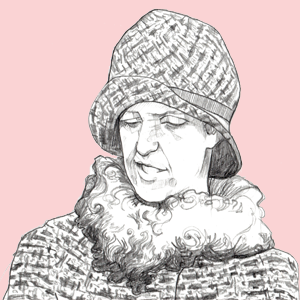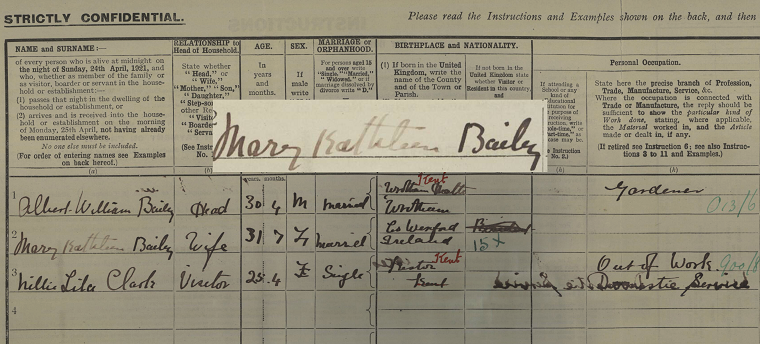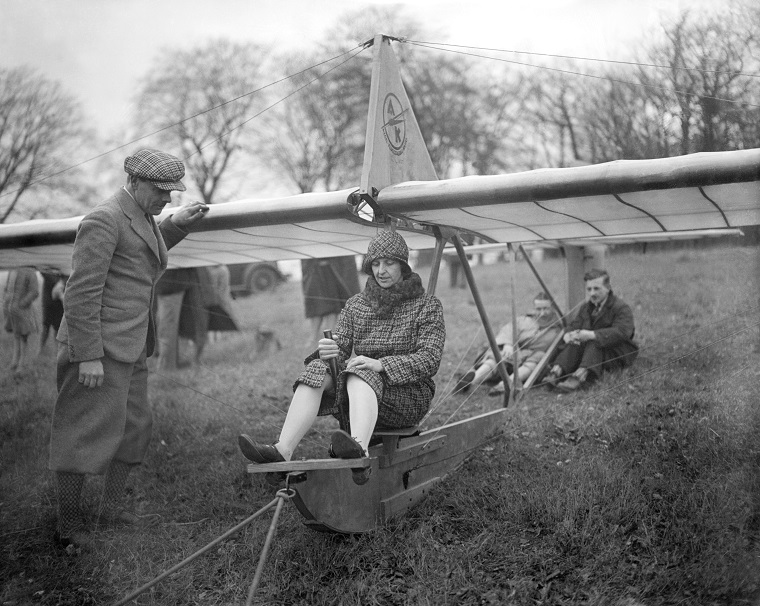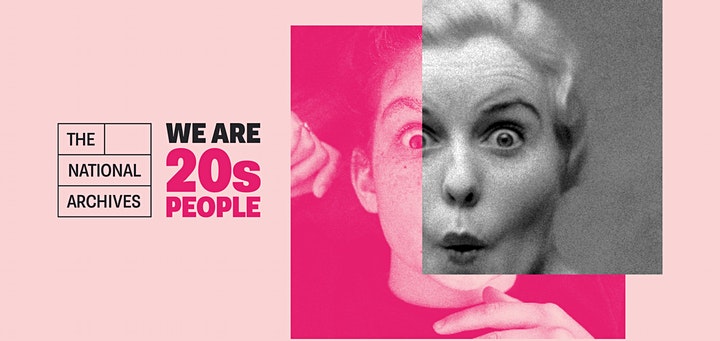 20 People of the 20s is part of 20sPeople – our season to mark the release of the 1921 Census, connecting the 1920s and the 2020s. This story was researched by Katherine Howells, Visual Collections Researcher. Katherine is one of the curators of our exhibition The 1920s: Beyond the Roar.
20 People of the 20s is part of 20sPeople – our season to mark the release of the 1921 Census, connecting the 1920s and the 2020s. This story was researched by Katherine Howells, Visual Collections Researcher. Katherine is one of the curators of our exhibition The 1920s: Beyond the Roar.
Female aviator and first woman to fly across the Irish Sea

An illustration of Mary Bailey, created from a photograph. By Sophie Glover.
Lady Mary Bailey was one of the greatest aviators of her time, pushing the boundaries of expectations for women in the 1920s. She was born Mary Westenra in 1890, the daughter of the fifth Baron Rossmore and his wife Mittie, in County Monaghan, Ireland. Mary showed an adventurous spirit from a young age and in 1906 she ran away from her aristocratic family, choosing to pursue her enthusiasm for adrenaline-filled sports, including motoring and aviation.
In 1911, she married the South African millionaire Sir Abe Bailey in Chelsea, with whom she had five children. In the 1921 census, Mary and Abe are living at Bryanston Square, Marylebone with John Bailey, Abe’s son from his previous marriage, and twelve servants. The couple’s children are recorded as living separately in Deal, Kent, with a governess and three children’s nurses.
Mary volunteered during the First World War as a mechanic with the Royal Flying Corps, serving in Britain and France. She eventually gained a pilot’s licence and began an impressive sporting career, winning trophies for her many daring flights. She became the first woman to fly across the Irish Sea, and also set a world height record of 17,283ft (5,268m) in a light aircraft.

Mary’s 1921 Census record
As well as flying, Mary Bailey had a love for motoring and driving at high speed. In November 1924, she was fined £4 for driving her car at 33 miles per hour, well over the ten-mile speed limit!
In 1928, she made an incredible 8,000 mile solo flight from Croydon to Cape Town in her de Havilland Moth aircraft, making a return flight the same year. Foreign Office records at The National Archives show how officials tried to prevent her, fearing her safety as a woman travelling alone. They quoted the rule in force at the time, which was that ‘in no circumstances will a flight be allowed if the sole occupant of the machine be a lady unless there is a second escorting machine containing qualified male pilot’.
She wrote that she would rather ‘be free to proceed at my own risk’ and did not want anyone to be under obligation to search for her, should her plane be forced to land. Records show that her husband Abe did what he could to induce the Foreign Office to allow her flight, writing that ‘it is useless my objection so kindly permit my wife flight’.

Lady Bailey © The Peter Butt Aviation Collection – Mary Evans Picture Library
She did make the flight successfully to Cape Town, and was escorted for part of the journey through Sudanese territory. On the return journey, she refused an escort and resolved to fly via the west coast of Africa, a more perilous route. Her husband wrote to Lord Lloyd, the High Commissioner for Egypt, on 4 September:
‘I am so worried about by wife … unless she receives your permission to fly back without an escort she is coming via the West Coast which means almost certain death. She is mad and obsessed with the idea that flying will only save the B. Empire … I have tried all I can to persuade her to come by boat but without success … she has the determination and obstinacy of forty devils.’
Mary Bailey’s return flight was a great success, becoming the longest solo flight and the longest flight by a woman up to that point, and winning her the 1929 Britannia Trophy. In January 1930 she was made a Dame Commander of the Order of the British Empire.
In the 1939 Register, Mary Bailey was living with two of her children and several other children, teachers and servants at Bletchington Park, a large country house in Oxfordshire. The children and teachers present in the household were likely evacuees. In 1942, at the age of fifty, she was successful in enlisting with the WAAF as a motor transport drive; she reportedly arrived at the recruitment centre on a motorcycle.
Find out more
For those interested in aviation, we hold a number of records on research and development in the Royal Air Force – check out this guide to get started: Research and development in the Royal Air Force
Book on to one of our online curator tours to learn more about the census, and life in 1920s Britain: Online curator tour | The 1920s: Beyond the Roar Tickets, Multiple Dates | Eventbrite
What is 20 People of the 20s?
20 People of the 20s is a project where staff members at The National Archives have researched a story of someone from the 1920s. From family members and First World War service personnel, to famous performers and politicians, we hope these stories will encourage you to explore the breadth of experience in 1920s Britain. 20 People of the 20s is part of 20sPeople – our season to mark the release of the 1921 Census, connecting the 1920s and the 2020s. Find out more here.
